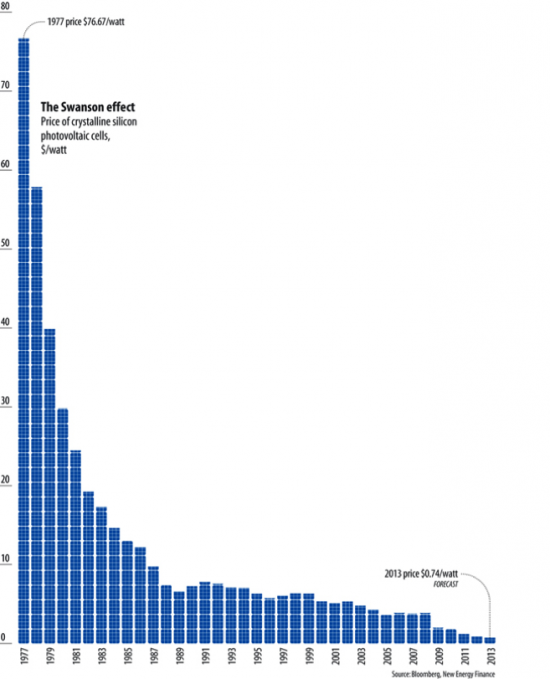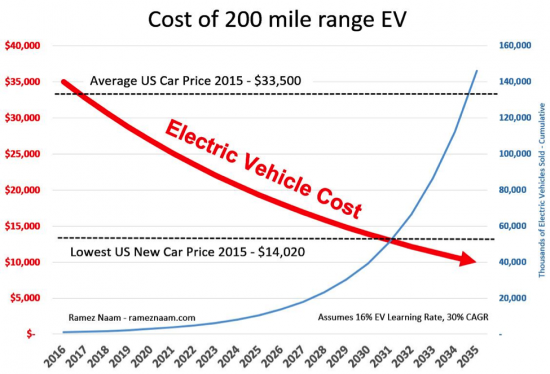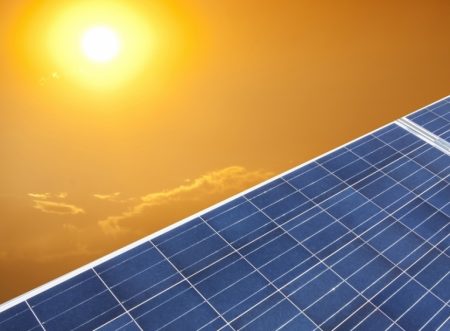September 5, 2016 – It’s Labour Day here in Canada and in other places around the world, a tradition that goes back to 1872. Advances in technology are seen by many who celebrate this day as the enemy, automating work processes and destroying jobs. Yet it is the advances in technology that first led to organized labour as assembly lines replaced cottage industries. So it would seem that as much as Labour Day represents those who work at steel mills, coal mines, assembly lines, oil rigs, classrooms and offices, without technology there would never have been this day.
And speaking of technologies about to further disrupt our world, Peter Diamandis shares with us the observations of Ramez Naam, Chair of Energy & Environmental Systems, Singularity University. Naam is the author of the Nexus series, a science fiction trilogy about our future world in a post-human age. He has also written The Infinite Resource: The Power of Ideas on a Finite Planet. Diamandis interviewed Naam to get his perspective on three major disruptive innovative forces: solar power, batteries and electric vehicles (EVs). Hope you enjoy.
Creating an Abundant Solar Economy
In 88 minutes, 470 exajoules of energy from the sun hits the Earth’s surface, as much energy as humanity consumes in a year. In 112 hours – less than five days – it provides 36 zettajoules of energy. That’s as much energy as is contained in all proven reserves of oil, coal and natural gas on the planet. If humanity could capture 1 part in 1,000 (one-tenth of one percent) of the solar energy striking the Earth – just one part in one thousand – we could have access to six times as much energy as we consume in all forms today.
These staggering numbers, in combination with an exponential decline in photovoltaic solar energy costs ($ per watt price of solar cells), put us on track to meet between 50 percent and 100 percent of the world’s energy production from solar (and other renewables) in the next 20 years. Solar is already undercutting coal and natural gas in sunny geographies. Take a look at the plummeting costs.

Over the last 30 years, solar module prices have dropped by a factor of 100. Critically — a new solar price record was set in Chile just a few weeks ago at $0.0291 per Kilowatt hour – 58% less than the price of natural gas from a new plant!
And this is just the beginning. How cheap can it get?
The graph below shows that, if solar electricity continues on its current demonetization trajectory, by the time solar capacity triples to 600GW (by 2020 or 2021, as a rough estimate), we could see global unsubsidized solar prices that are roughly half the cost of coal and natural gas.
This is without factoring in the cost of air pollution and carbon pollution emitted by fossil fuel power plants.
Battery Technology Reaching an Inflection Point
Of course, one limitation of solar is that it’s only available during the day. We’ll need breakthroughs in battery technology to transition fully into a solar economy. The good news is that battery technology and energy storage are also hitting an inflection point.
Here are five trends shaping the future of battery technology and energy storage:
- Lithium-ion Technology: Lithium-ion batteries prices are rapidly declining for more than 20 years, dropping in price for consumer electronic uses by 90% between 1990 and 2005, and continuing to drop since then. This price reduction is coupled with an 11 times increase in battery storage capacity per $100 unit cost since 2000.
- Scaled Production: The roll out of Tesla’s Gigafactory makes $100 per Kilowatt hour lithium-ion batteries for EVs possible by 2020. This price point yields an astonishing $0.11 per Kilowatt hour for electricity storage or, in other words, allows you to fill up the equivalent of a tank of gas for an energy cost of $9.35.
- Flow Batteries: Flow batteries are just starting to come to market and have been proven in the lab to operate for 5,000 charge cycles or more. This is a 10 times improvement over standard consumer lithium-ion batteries.
- Compressed Air Storage: Companies like LightSail Energy are creating physical components rated for 10,000+ charge cycles.
- Time of Use Arbitrage: American utilities [Canadian jurisdictions as well] are increasingly going to time-of-use charges for electricity. Right now that means charging consumers a low rate in the middle of the night (when demand is low) and a high rate in the afternoon and early evening (when demand is at its peak, often twice as high as the middle of the night).
The real key here is that we are going to see a mindset shift in the near future. It will just be accepted that every home will be powered by a combination of batteries, rooftop solar and EVs (i.e. Tesla’s vision)… and we’ll gawk disapprovingly at the idea of driving an explosive, expensive and environmentally damaging gas vehicle.
EVs Gaining Speed
EVs are taking the transportation industry by storm. Within the next two decades, EVs will undoubtedly be the cheapest and most widely used vehicles on the market.
Take a look at the chart below. By roughly 2030, EVs with a 200+ mile range are going to be cheaper than the cheapest car sold in the U.S. in 2015.

The primary factor driving this decreasing cost is that EVs are inherently simpler devices only possessing 10% of the moving parts of gasoline-powered vehicles (cheaper to build, cheaper to maintain). Every major car manufacturer is working on EVs. The number of models has grown from 2 in 2010 to over 25 today. Just four months ago, Tesla Motors shattered expectations with the biggest one-week launch of any product ever by taking 400,000 advanced orders for its $35,000 Model 3 (implying $14 billion in future sales). Ford has followed suit, investing $4.5 billion in EVs with plans to add 13 EVs and hybrids by 2020, making more than 40% of its lines electrified.
Naam describes these three technologies as the trifecta of disruptive forces hitting the energy industry today and over the next twenty years. And it all starts with the enormous energy resource represented by the sun and the technological advancements to make harvesting this energy economically feasible. It means a paradigm shift to abundant, cheap energy for everyone on the planet. Now how will that impact labour? That’s a subject for another day.










